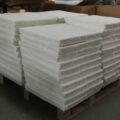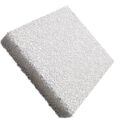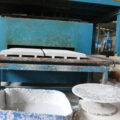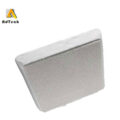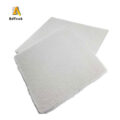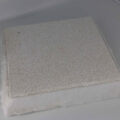Zirconia Foam Filter performs the following functions:
- Purification of molten metal from metal and non-metal components;
- Reducing the amount of oxides during the formation of a turbulent flow;
- Increasing the fluidity of the metal;
- Elimination of inclusions and metal defects;
- Improving casting quality due to improved mechanical properties;
- Reducing the formation of scrap and the exclusion of additional work.
All foam ceramic filters are characterized by a mesh matrix. Pores of spherical shape, the same size and volume are connected to each other, forming “windows” through their walls. Due to its structure with fairly winding paths, pores are able to pass metal and retain slag and other types of pollutants. Ultimately, such a specific structure of PPU-based filters demonstrates excellent efficiency when filtering metals against the background of filters with a different structure used in the foundry industry.
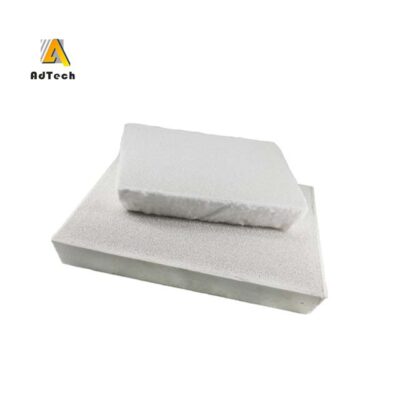
Zirconia Ceramic Foam Filter is resistant to high temperatures and freely absorb molten metal. High strength characteristics allow the use of such filters without the installation of spare metal screens. The basic material of the zirconia ceramic foam filter is ZrO2. The heat-resistant temperature of the zirconia filter is higher than 1760°C, with high strength and excellent high-temperature impact.
Among various types of metal oxide ceramics, zirconia has the best high-temperature stability. Most suitable for ceramic coatings and high temperature refractory products. The thermal conductivity of zirconia is the lowest among ordinary ceramic materials, and the coefficient of thermal expansion is relatively close to that of metal materials. The special crystal structure makes it an important electronic material. Good mechanical properties and thermophysical properties make it a reinforcing phase, which has excellent properties in metal matrix composites. Among various metal oxide ceramics, the use of zirconia ceramics is second only to alumina ceramics. Zirconia ceramics can obtain high strength and toughness through phase transformation toughening.



